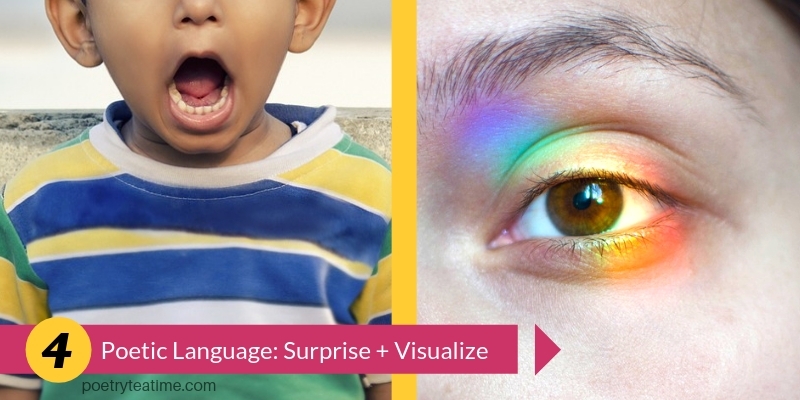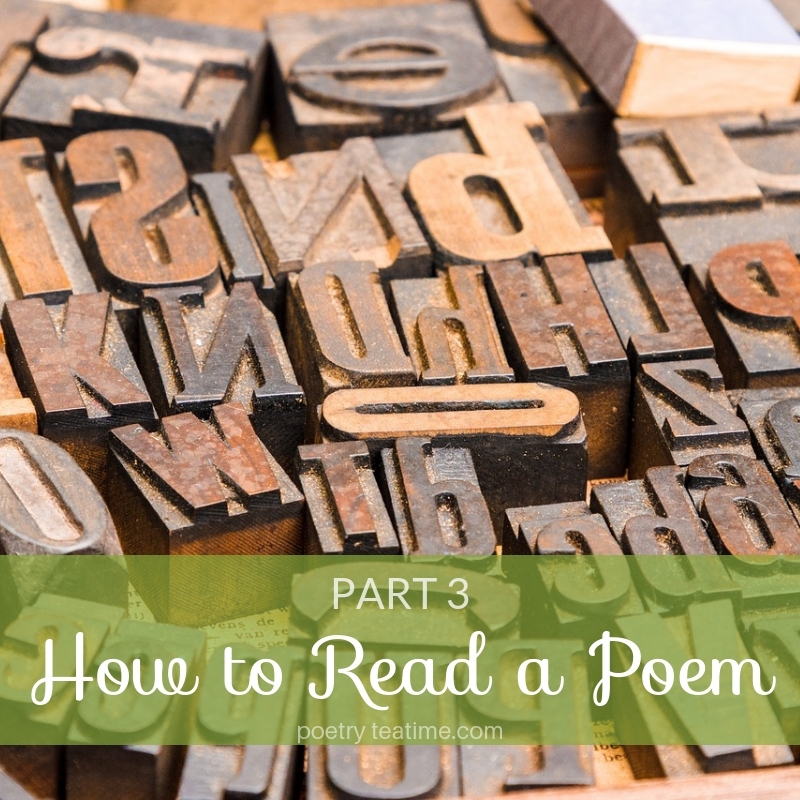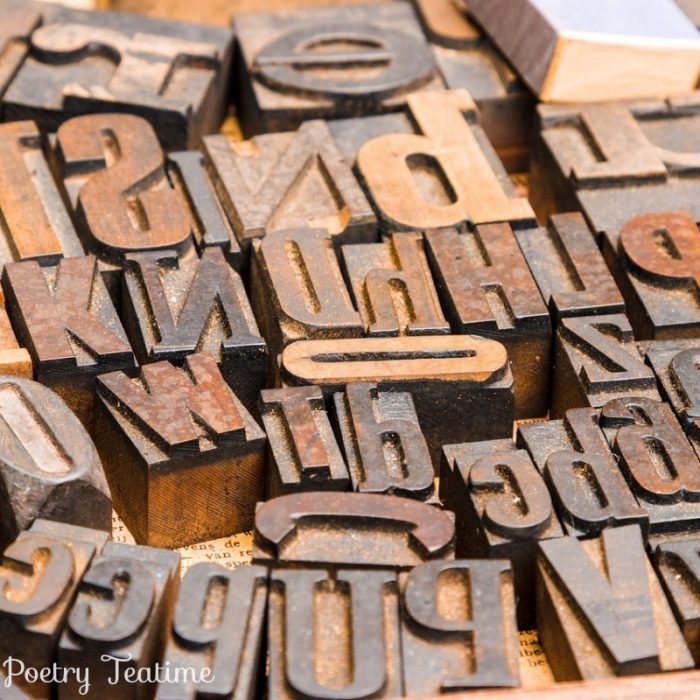In the past few weeks, we’ve talked about getting started with a poem by taking a glance and reading it aloud, then looking at the big picture of a poem by boiling it down to “What Happened” or “What Is.” Now, it’s time to look at the sentence-level of poetry. So let's dive into poetic language!
What is poetic language?
Poetic language (also called poetic devices) are the tools of of sound or meaning that a poet can use to make the poem more surprising, vivid, complex, or interesting. Examples of these tools include alliteration, onomatopoeia, imagery, metaphors and similes, and allusion.
Poets don't include poetic language because they want to make their poem sound complicated or hard to understand. Instead, they use these tools to help you wake up, pay attention, and look at the world in new ways.
Find out more about poetic language in this list of poetic terms from Poetry Teatime and this long list of devices from Wikipedia.
Step One: Be Surprised
There are two steps to understanding poetic language.
First, pay attention to places where the language surprises you.
Here are some questions to help you think about the surprise of poetic language.
- What images are in the poem? What does the poet describe that they see or sense with their five senses? (a dandelion seed floating in the wind, the sound of windchimes, or the smell of Mom’s apple pie)
- What metaphors or similes does the poet use? (love is like a rose or sadness is a waterfall)
- Does the poet use any strange or unfamiliar words? Look up anything you don’t know!
- Are there any places where the punctuation is surprising?
- Can you spot any other devices the poet is using? (Allusion, apostrophe, personification, repetition of sounds or words, and more. It’s a bit like a treasure hunt!)
Pay attention to anything else that’s different from the ways you normally talk and think about the world.

Step Two: Visualize
Second, visualize the poetic language.
- If it’s an image, then picture it in your mind (or draw it out!)
- If it’s a metaphor or simile, try to taste, smell, touch, and hear both things and think about how they may be connected
- If the poet is playing with sounds or punctuation, read it out loud again and hear how the sounds change or add extra meaning to the words of the poem
In general, picture the kind of scene, moment, or world that the poem describes.
Last, what’s the point of poetic language & images?
We’re not quite done talking about poetic language. When you’ve spotted and visualized some of these poetic elements in the poem, think about why the poet may have used those devices.
What do each of these things (images, metaphors, word choice, punctuation) add to the poem as a whole?
- Do they help you understand what’s happening in the poem in a different way?
- Do they affect how the poem makes you feel (happy, sad, excited, or something else)?
- Do they make you notice things about the world you haven’t noticed before?
Just remember, surprise and visualize! Next week in Part 4, we’ll be learning about the next-to-last step in understanding poetry: all about form.
How to Read a Poem
Part 1: Getting Started
Part 2: The Big Picture
Part 3: Poetic Language
Part 4: Find the Form
Part 5: So What?



